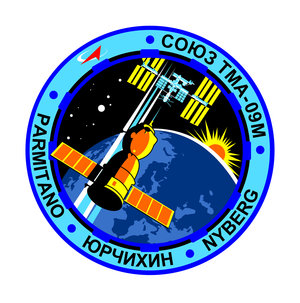Accept all cookies Accept only essential cookies See our Cookie Notice

About ESA
The European Space Agency (ESA) is Europe’s gateway to space. Its mission is to shape the development of Europe’s space capability and ensure that investment in space continues to deliver benefits to the citizens of Europe and the world.
Highlights
ESA - United space in Europe
This is ESA ESA facts Member States & Cooperating States Funding Director General Top management For Member State Delegations European vision European Space Policy ESA & EU Space Councils Responsibility & Sustainability Annual Report Calendar of meetings Corporate newsEstablishments & sites
ESA Headquarters ESA ESTEC ESA ESOC ESA ESRIN ESA EAC ESA ESAC Europe's Spaceport ESA ESEC ESA ECSAT Brussels Office Washington OfficeWorking with ESA
Business with ESA ESA Commercialisation Gateway Law at ESA Careers Cyber resilience at ESA IT at ESA Newsroom Partnerships Merchandising Licence Education Open Space Innovation Platform Integrity and Reporting Administrative Tribunal Health and SafetyMore about ESA
History ESA Historical Archives Exhibitions Publications Art & Culture ESA Merchandise Kids Diversity ESA Brand Centre ESA ChampionsLatest
Space in Member States
Find out more about space activities in our 23 Member States, and understand how ESA works together with their national agencies, institutions and organisations.
Science & Exploration
Exploring our Solar System and unlocking the secrets of the Universe
Go to topicAstronauts
Missions
Juice Euclid Webb Solar Orbiter BepiColombo Gaia ExoMars Cheops Exoplanet missions More missionsActivities
International Space Station Orion service module Gateway Concordia Caves & Pangaea BenefitsLatest
Space Safety
Protecting life and infrastructure on Earth and in orbit
Go to topicAsteroids
Asteroids and Planetary Defence Asteroid danger explained Flyeye telescope: asteroid detection Hera mission: asteroid deflection Near-Earth Object Coordination CentreSpace junk
About space debris Space debris by the numbers Space Environment Report In space refuelling, refurbishing and removingSafety from space
Clean Space ecodesign Zero Debris Technologies Space for Earth Supporting Sustainable DevelopmentLatest
Applications
Using space to benefit citizens and meet future challenges on Earth
Go to topicObserving the Earth
Observing the Earth Future EO Copernicus Meteorology Space for our climate Satellite missionsCommercialisation
ESA Commercialisation Gateway Open Space Innovation Platform Business Incubation ESA Space SolutionsLatest
Enabling & Support
Making space accessible and developing the technologies for the future
Go to topicBuilding missions
Space Engineering and Technology Test centre Laboratories Concurrent Design Facility Preparing for the future Shaping the Future Discovery and Preparation Advanced Concepts TeamSpace transportation
Space Transportation Ariane Vega Space Rider Future space transportation Boost! Europe's Spaceport Launches from Europe's Spaceport from 2012Latest

Soyuz TMA-15M, 2014
Thank you for liking
You have already liked this page, you can only like it once!
ESA astronaut Samantha Cristoforetti (IT) is assigned to fly on the Soyuz TMA-15M spacecraft to the International Space Station, scheduled for November 2014 and as part of Expedition 42/43. Expedition 42 begins with the scheduled undocking of Soyuz TMA-13M in November 2014. The three new Soyuz TMA-15M crew members (Samantha, cosmonaut Anton Shkaplerov and NASA astronaut Terry Virts) will be launched shortly after. They join cosmonauts Alexandr Samokutyayev and Yelena Serova, and NASA astronaut Barry Wilmore, who will be already on the Station.
The patch is based on the shape and features of an attitude indicator, a fundamental element on an aircraft instrument panel. This represents the pilot profession, which is common to all three crewmembers. The outline of a Soyuz spaceship and its golden solar array panels, representing the horizontal lines of the indicator, are integrated with the instrument’s pitch and bank angle scales. The depicted attitude of the spaceship corresponds to a bank angle of 15° (the serial number of this Soyuz TMA) and a pitch angle of 51° (the orbit inclination).
Russian and Latin characters, indicating the names of the crewmembers and the spaceship’s name ‘Soyuz TMA-15M’, are distributed in the external scale ring. The Soyuz flying above Earth connects the left side of the patch, which includes the destination – ISS, with the right side – the rising Sun (a symbol of cognition and renewal). A shadow, in the shape of an aircraft combining elements of a MiG-29, an F-16 and an AMX (Russian, US and Italian aircraft), accompanies the flight of the spaceship and points to the indissoluble link between aviation and spaceflight.
The three more prominent stars, next to the constellations Auriga and Cassiopeia, represent the fulfilment of a spaceflight by the cosmonaut and the two astronauts of this expedition. The overall number of stars corresponds to the last two figures of the launch year (2014) and, including the Sun, of the return year (2015).
The design is based on a concept from Soyuz TMA-15M commander Anton Shkaplerov and cosmonaut Andrei Babkin, with graphics work by Riccardo Rossi.
-
CREDIT
Roscosmos/Spacepatches.nl -
LICENCE
ESA Standard Licence

Soyuz TMA-09M, 2013

Samantha during simulation in the Soyuz

Thomas and Oleg during training in the Soyuz TMA simulator

Soyuz TMA-13M spacecraft roll out















 Germany
Germany
 Austria
Austria
 Belgium
Belgium
 Denmark
Denmark
 Spain
Spain
 Estonia
Estonia
 Finland
Finland
 France
France
 Greece
Greece
 Hungary
Hungary
 Ireland
Ireland
 Italy
Italy
 Luxembourg
Luxembourg
 Norway
Norway
 The Netherlands
The Netherlands
 Poland
Poland
 Portugal
Portugal
 Czechia
Czechia
 Romania
Romania
 United Kingdom
United Kingdom
 Slovenia
Slovenia
 Sweden
Sweden
 Switzerland
Switzerland
























